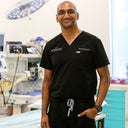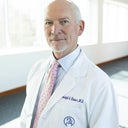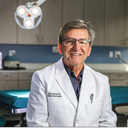I had breast augmentation in August 2007 and had my right implant removed 5 months later. The cause of it was unknown at the time, but after months of my incision not healing, and numerous visits to doctors and countless cultures, an infectious disease specialist was able to pinpoint it to a particular staph infection. I was given antiobiotics which I took for 3-4 months.
My incision healed up in August and I've been given the green light for my redo in February. All doctors have recommended that I wait 6 months. Needless to say, I'm happy, yet fearful about getting my implant back in. Is it too early though? I certainly can wait if need be. Could I get another staph infection? I definitely do not want to repeat what I went through again. Is there anything I can do to prevent this from happening? Your advice and insight is greatly appreciated!
Answers (20)
From board-certified doctors and trusted medical professionals
Dr. Naveen Setty, MD

Dr. Naveen Setty, MD
Board Certified Plastic Surgeon
Answer
Dr. Richard J. Bruneteau, MD

Dr. Richard J. Bruneteau, MD
Board Certified Plastic Surgeon
Answer
Dr. Raffy Karamanoukian, MD, FACS

Dr. Raffy Karamanoukian, MD, FACS
Board Certified Plastic Surgeon
Answer
Dr. York Jay Yates, MD

Dr. York Jay Yates, MD
Board Certified Plastic Surgeon
Answer
Dr. Joseph G. Bauer, MD, FACS

Dr. Joseph G. Bauer, MD, FACS
Board Certified Plastic Surgeon
Answer
Dr. Vincent N. Zubowicz, MD

Dr. Vincent N. Zubowicz, MD
Board Certified Plastic Surgeon
Answer
Dr. George Marosan, MD

Dr. George Marosan, MD
Board Certified Plastic Surgeon
Answer
Dr. Armando Soto, MD, FACS

Dr. Armando Soto, MD, FACS
Board Certified Plastic Surgeon
Answer
Dr. Adam David Lowenstein, MD, FACS
Dr. Adam David Lowenstein, MD, FACS
Board Certified Plastic Surgeon
Answer
More Breast Implant Removal Questions
See all Breast Implant Removal Q&AWE SEND PRETTY
EMAILS
What’s trending? Who’s turning heads? Which TikTok myths need busting? We’ve got you. No fluff, no gatekeeping—just real talk. Get our free, unfiltered newsletter.